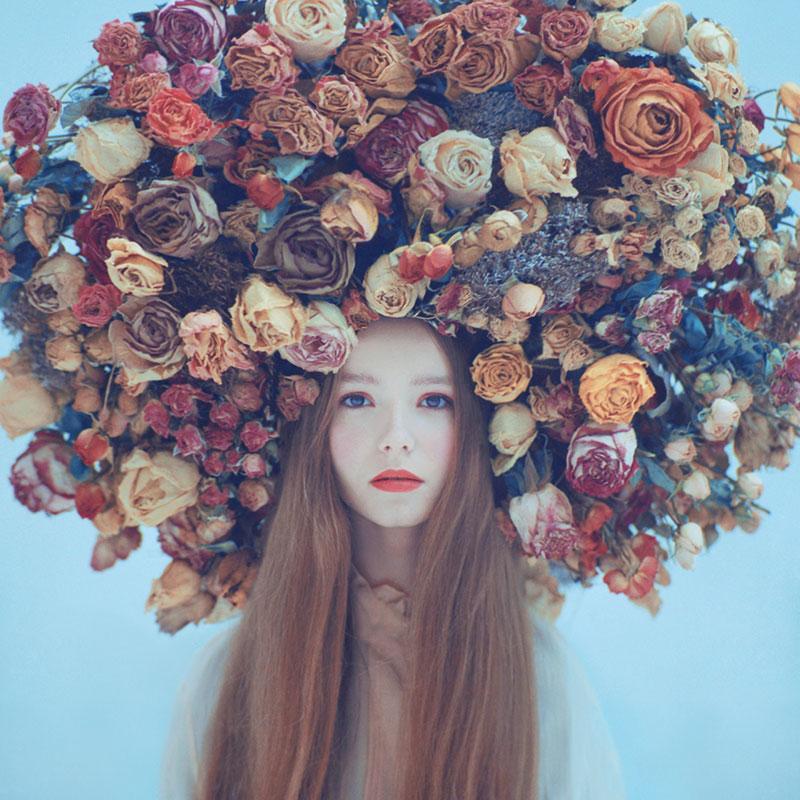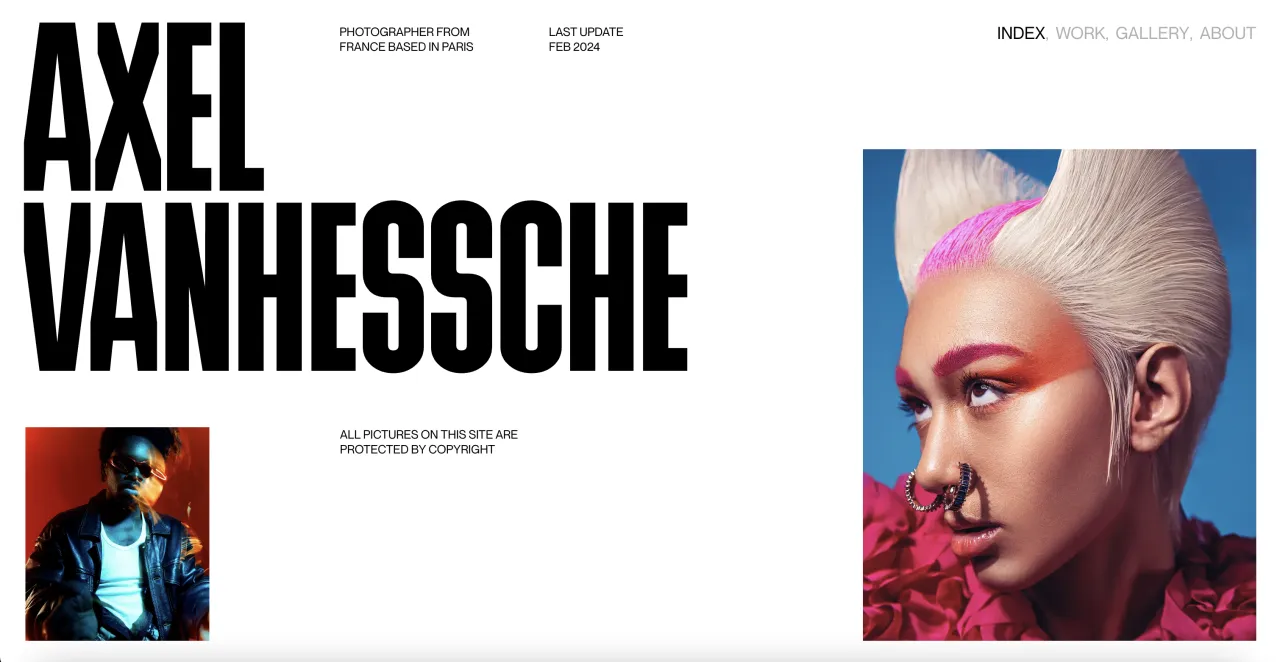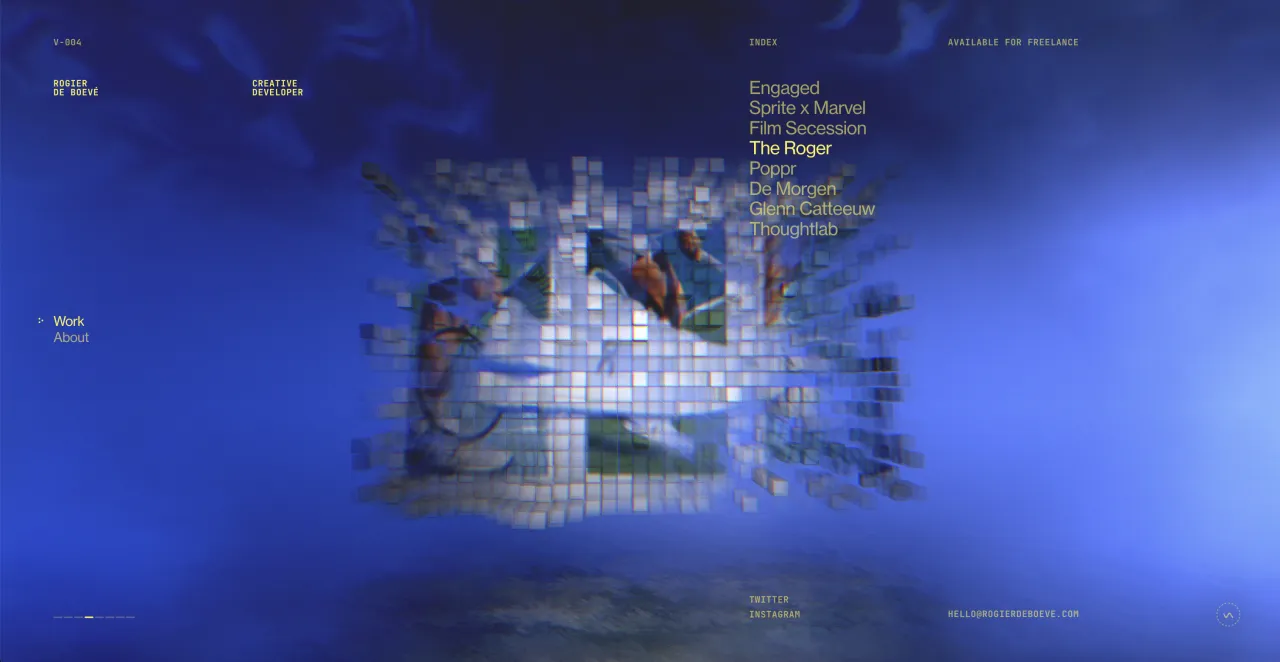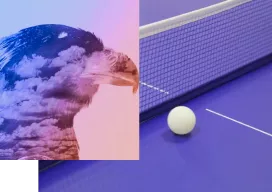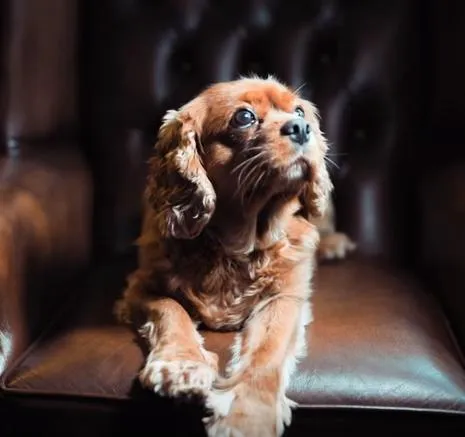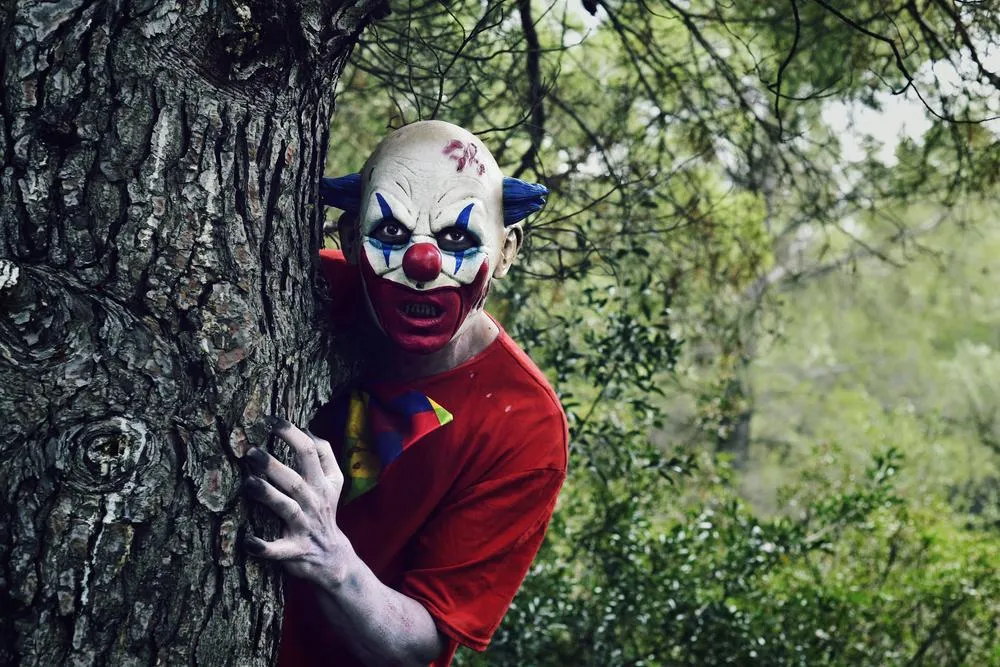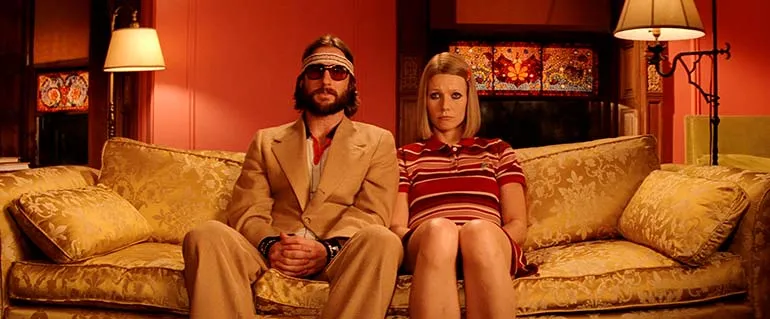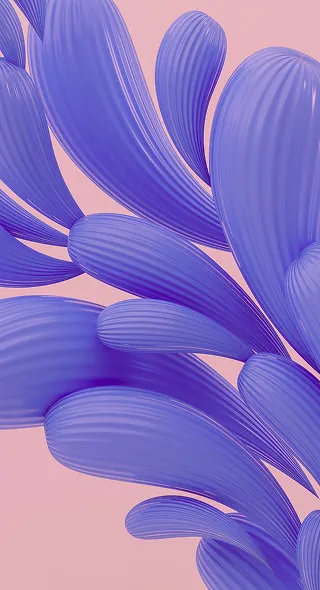Oleg Oprisco: Dreamy Surrealism with an Old Film Camera
Oleg Oprisco is a famous Ukrainian photographer that creates surrealist photographs with the help of his old Kiev film camera. His works are mesmerizing and take you to a mythical world, as if out of a dream. Oleg practically doesn’t edit his pictures and picks out his own props for shoots.
Oleg shares with us how he got into photography, how he carries out his photo shoots as well as interesting and amusing situations that happen during his photography sessions.
Tell us a little bit about yourself and your journey with photography. When did you know you wanted to be a photographer?
I was born in Lviv and I got into photography when I was 16. I just happened to get a job at a photo lab around that time. I started with shooting people for documents and then for a long time I worked as a printing specialist. This was the time when I grew interested in the process itself, got my first camera and tried shooting.
In search of creative flight, I moved to Kiev where I worked as an assistant to 2 commercial photographers. It was important for me to have this experience, the role of an assistant opened up doors and gave me a chance to try out different genres of photography. It was also significant in helping me understand how the market works from the inside. That was also when I started experimenting with film cameras and I developed this genre, or direction, like the work I’m producing now. The first shots from that period of my life are still available on my website.
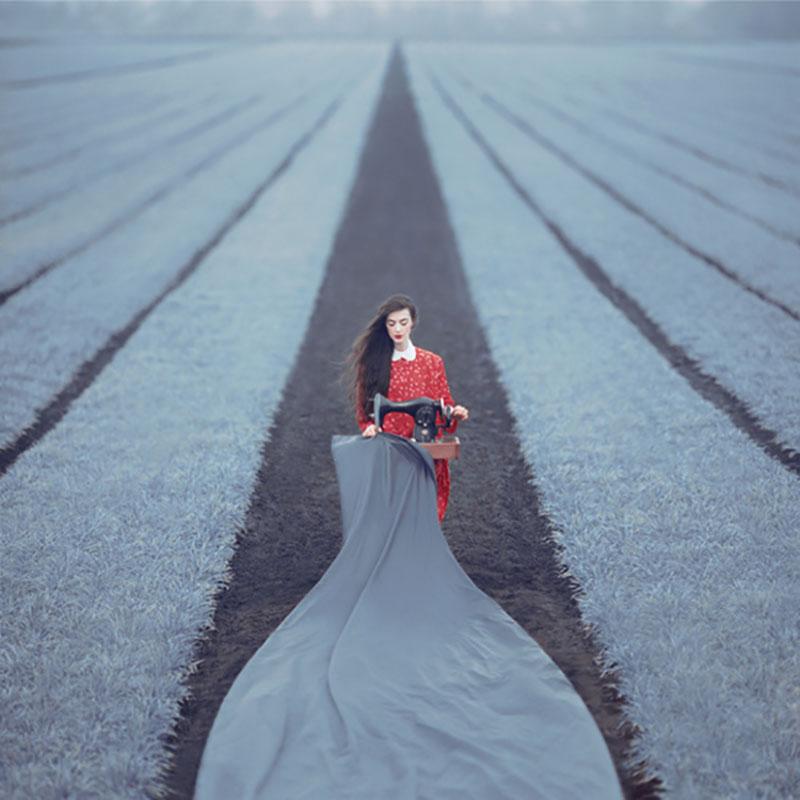
What equipment do you use for your photo shoots? Do you feel any limitations with it?
I have lots of cameras, but the main one remains Kiev 6C and Kiev 88 as well as a selection of lenses for the lens mount: Biometar 90mm/f2.8, Sonnar 135mm/f1.8, Sonnar 180mm/f2.8, Orestegor 300mm f4.
I frequentlz attempt at changing equipment, but I haven’t yet found a decent replacement that’s affordable and high quality. Film is after all a certain depth, color, etc.
In any case, the priority is always with content; a camera is just the instrument.
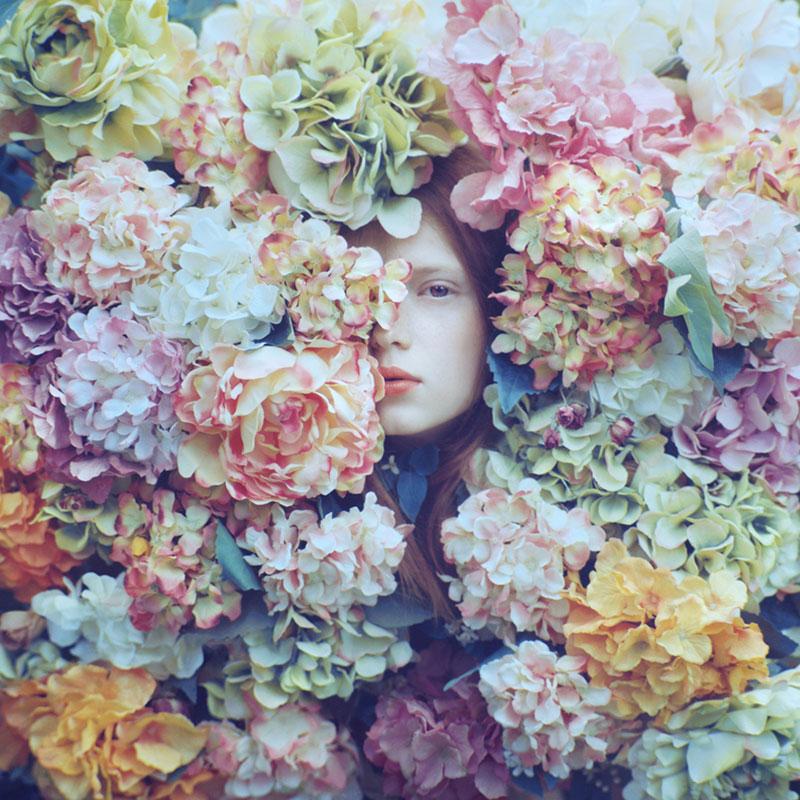
You’ve said that there’s no room for creativity with commercial photography. What advice would you give photographers that are afraid to leave the field?
I’m not so adamant 🙂 It all depends on the type of commercial photography, as well as the skills and character of the photographer. In tutorials, I always recommend to approach the prep stage very carefully, even the most basic commercial shoots and to first of all be more demanding with yourself. Creativity isn’t killed by commercial work, but rather routine and lack of goals.
For me, a different scheme works – to first create the ‘product’ and then work on selling it.
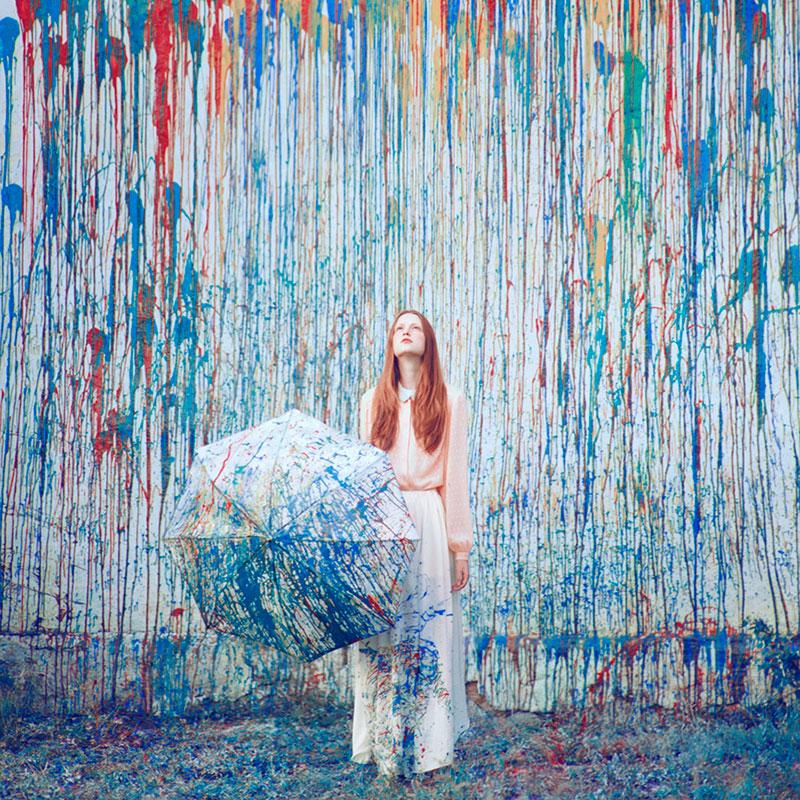
In one of your interviews you mentioned the importance of self-education. Could you recommend any resources for aspiring photographers? What sort of mistakes do you often see in workshops?
I think it’s important to shield yourself from visual trash. It’s hard to stay in shape when you’re always eating fast food, it’s impossible to compose something real listening to low quality music, etc. So actually art in itself is a compilation of our thoughts + the crazy mix of content we absorb.
I wouldn’t recommend anything specific, there are many resources online for any theme and request. I recommend changing the process of looking and to analyze on a very basic level, to take apart the component parts of art that cast an impression. For example, if you saw some movie and were surprised by the work of the cameraman/director/costume artist, try finding out more information about the person, what inspires them, why the movie was shot that way. This will take a few minutes, but will allow you to better understand the vision of the author. Plus, your collection of movies/books to read and see will always expand with the recommendations of people whose works you really liked.
Submerging yourself in quality content will help you evaluate the quality of your own work and progress.
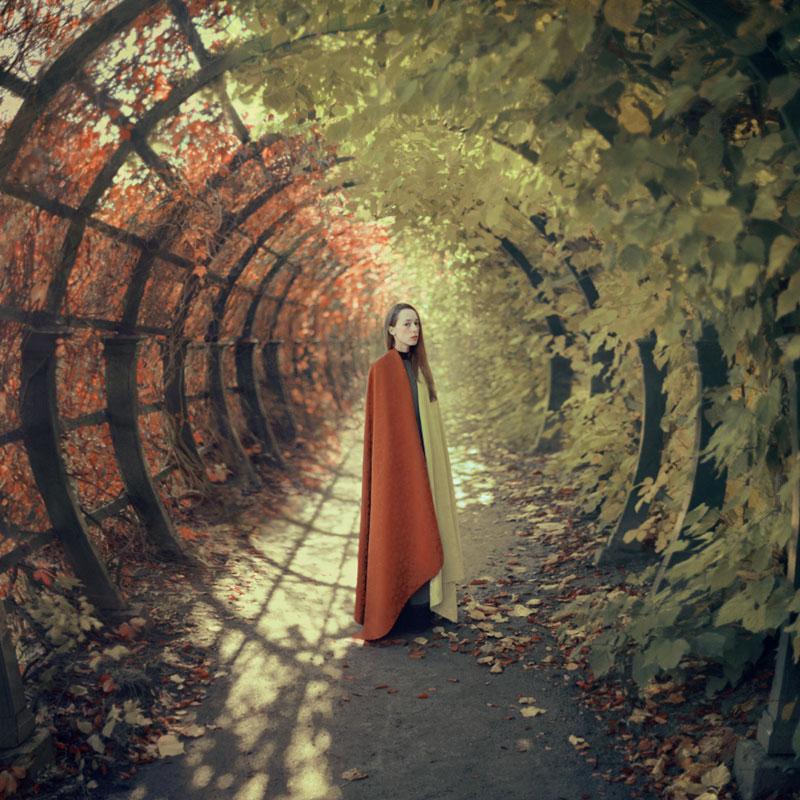
Your images capture unusual sceneries that are quite breathtaking. Could you tell us a story about ‘the making of’ of one of your images?
I can try using the example of one of my published photographs with the puzzle pieces.
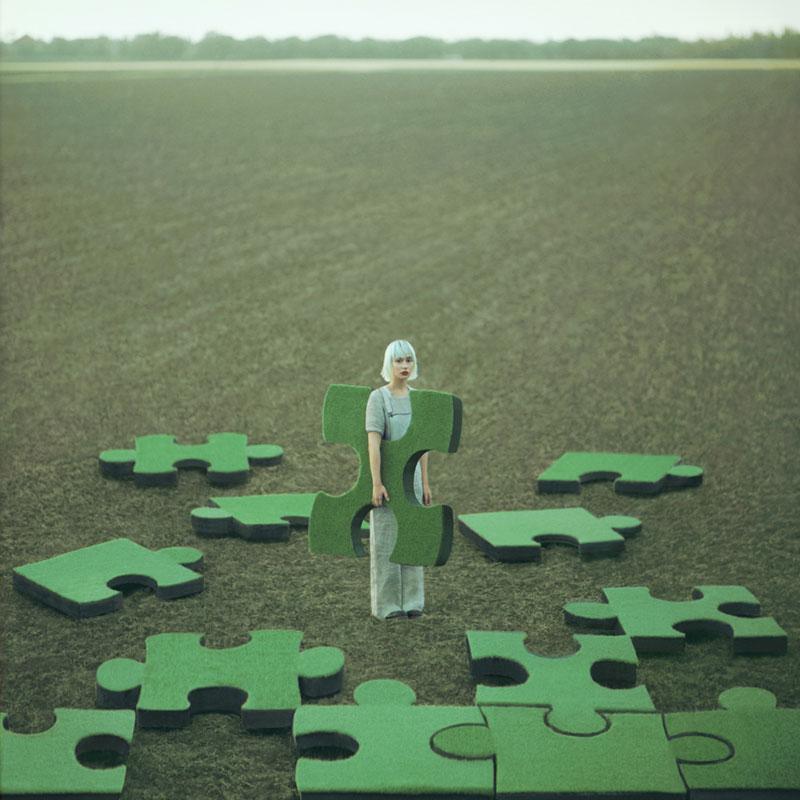
On the surface, I think the idea is obvious to all that have put together puzzles. Using large props, blowing up ordinary objects, creating a hyperbole situation – it’s all beautiful and interesting but for me, the logic within the shot was much more important.
Preparation for this shoot started when I formed the logical scene in my head – a woman in a field puts together a lawn from puzzle pieces. The puzzles themselves were cut out from foam core (10cm high). The size of each puzzle piece was a bit over a square meter. The edges were painted black and the top was made out of artificial grass (all in all, we used 15 square meters of it). Sadly, you couldn’t see the texture in a small format, but it worked well with a large print. The prep stage took 3 days.
The outfit was also chosen based on logic. It would have been silly to be creating a puzzle from turf in a beautiful night gown, so we chose simple overalls, like with any worker/designer/engineer.
For this shot we chose a particular type of look that will add to the image, and at the same time not take away the focal point. The search for new faces, just like the search for new ideas, never truly stops so social media is particularly useful for the task.
You can see what the ‘behind the shot’ scene looked like:
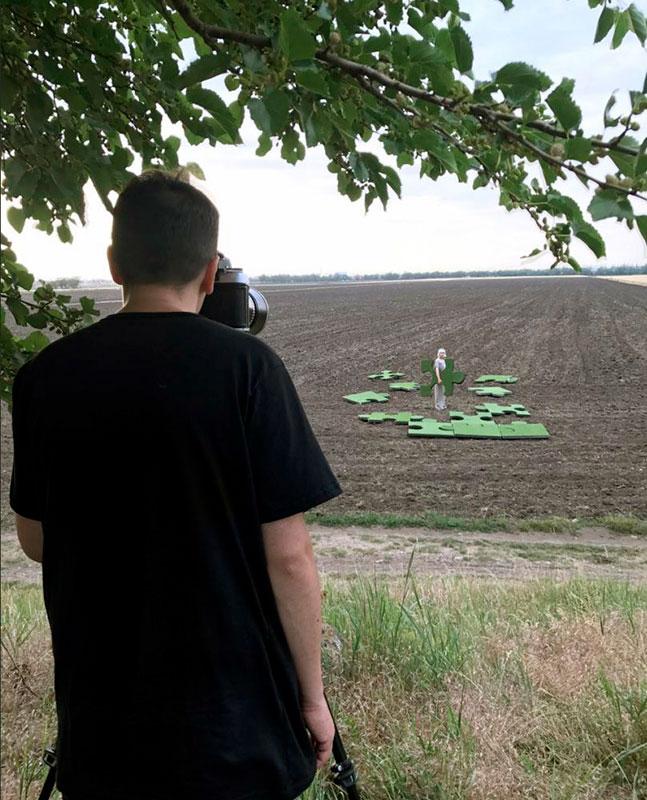
Have you had any fun stories with your photo shoots?
Creating props is a really important part of the process. Sometimes it reaches total absurdity when it takes a week to create an object and it would have been much easier and wiser to just create it in an editor. This is what all my funny stories are connected to. For example, the shot with a burning umbrella was shot 8 times. It was just impossible to find the right formula and to create the umbrella that would look like a ‘sandwich’ from several layers of fabric, flammable material and foil.
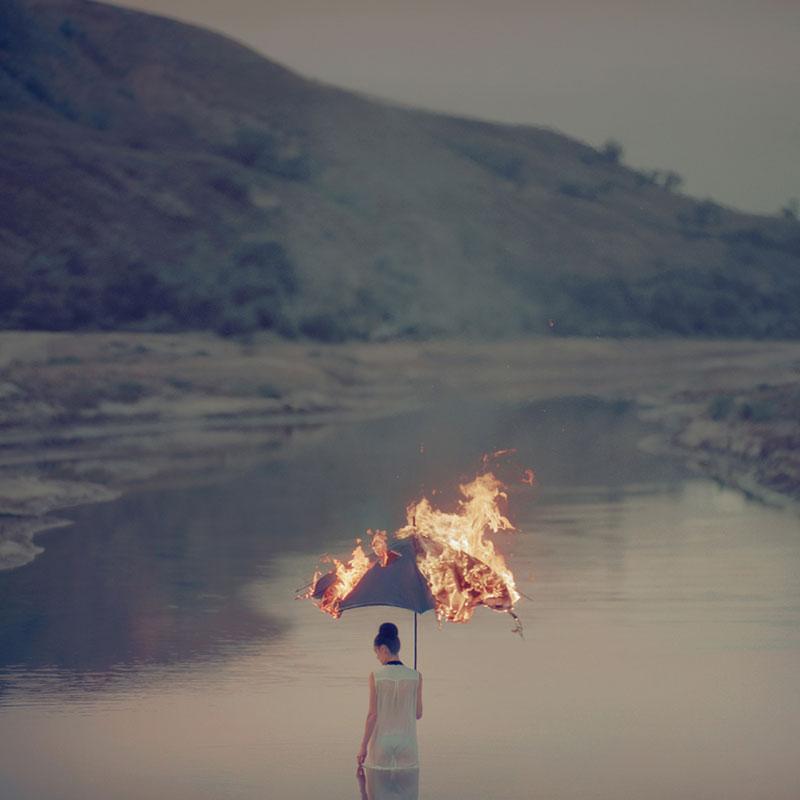
To shoot the same scene multiple times is a test in itself. Every try is a day of prep work and a day devoted to shooting. This shot basically took a month of my life and an unreal amount of patience. All in all, we ruined 30 umbrellas of the most different sizes and materials. Before every try, all the members involved in the shoot would beg me to not shoot this scene anymore.
The shot paid off literally a day after publication. To this day, it remains one of my most frequently sold prints and still is often bought for commercial usage.
Could you share your methods of looking for ideas? What do you do in a creative block?
For me, the search for ideas is a normal state that takes up a lot of time even during other photo shoots. It peaks when I am creating props. Attentiveness helps. Anything can push you to come up with new scenes – from a glass of milk to an afternoon walk.
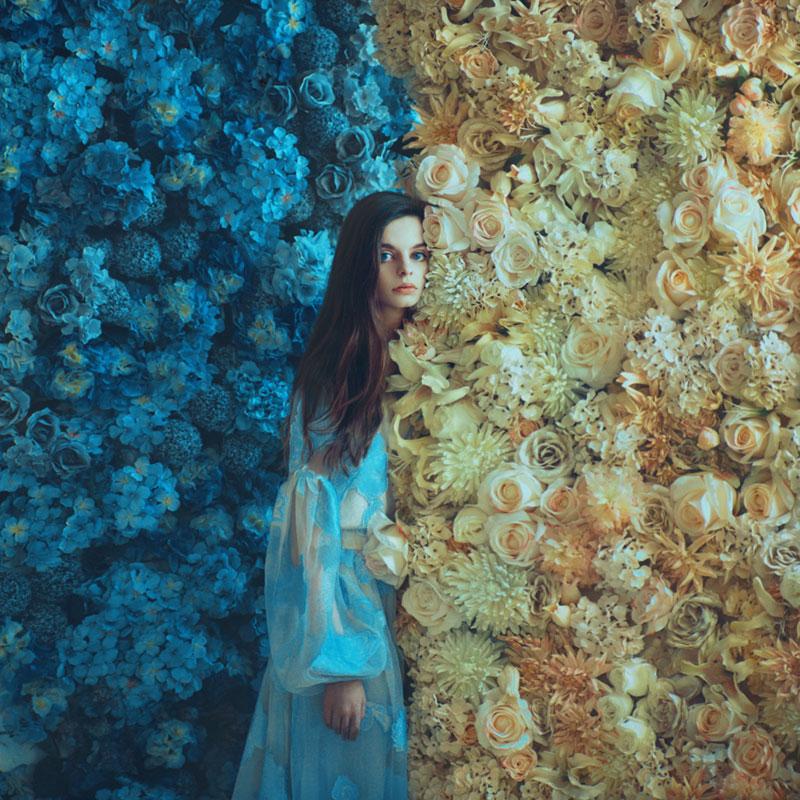
If you’re in a creative rut and a simple break isn’t helping, you should really question your choice of genre in general.
What do you consider your biggest achievement so far?
I love what I do and I get to share it with others 🙂
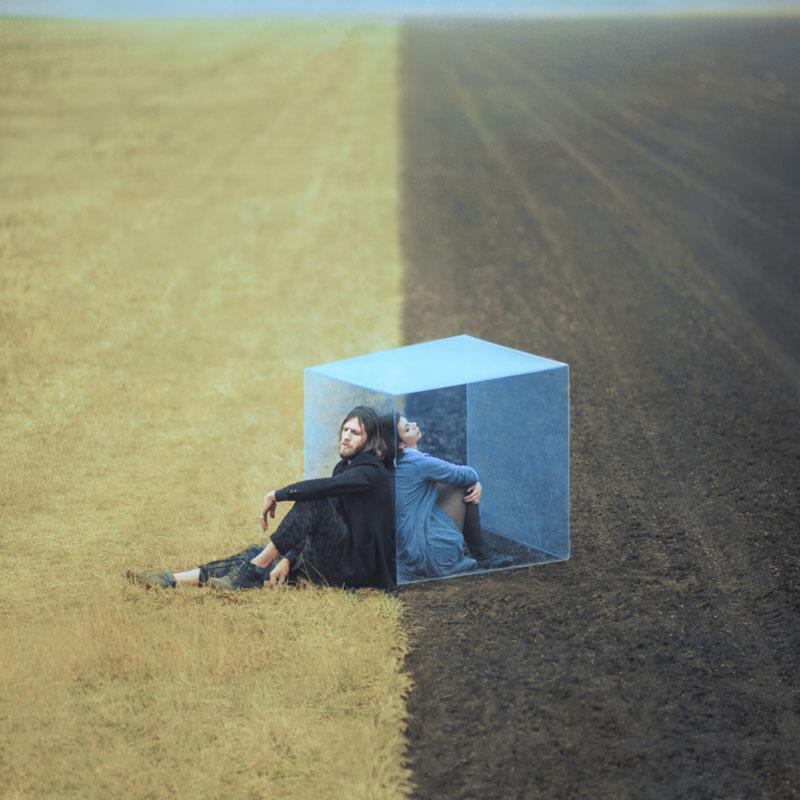
What kind of difficulties do you encounter at work? How do you overcome them?
The more experience you have, the less of these difficulties you encounter. Initially, it’s important to accept that there are no stories of constant success and flight – it’s always a rollercoaster. Like a succession of successful shoots/decisions/performances that mix with mistakes and failures.
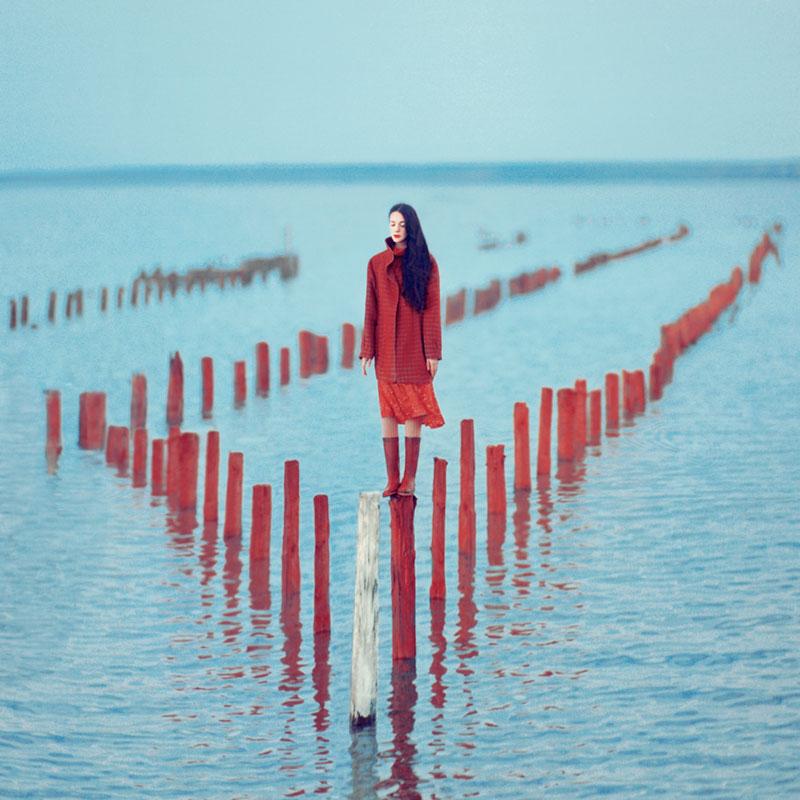
What’s the most valuable piece of advice you’ve received?
When I was little, I was taught to work a lot and set the right goals. It still works that way for me 🙂
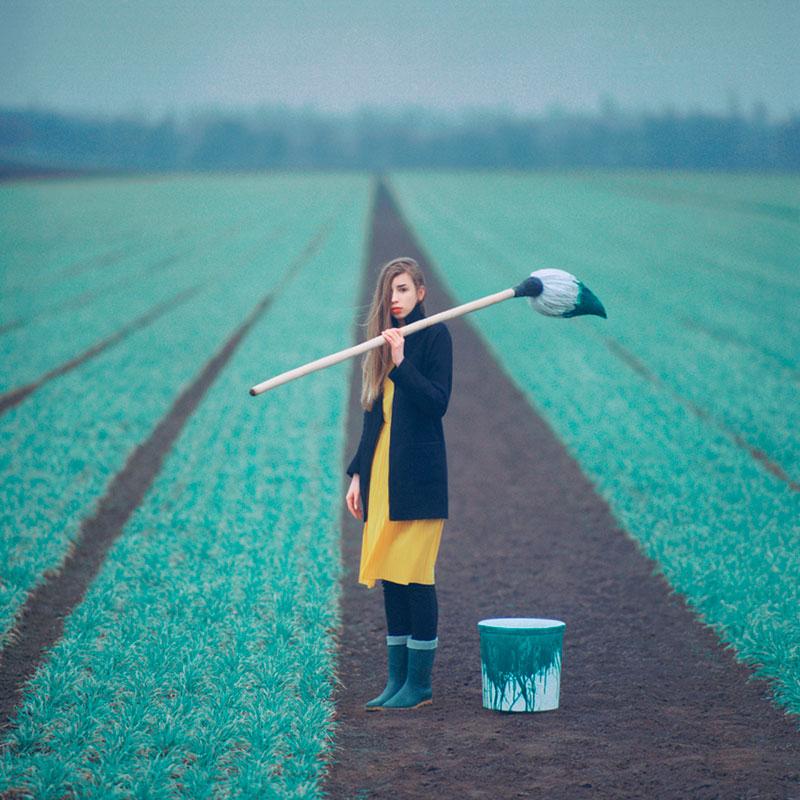
If you want to see other works by Oleg Oprisco, visit his personal site, Facebook or Instagram.
